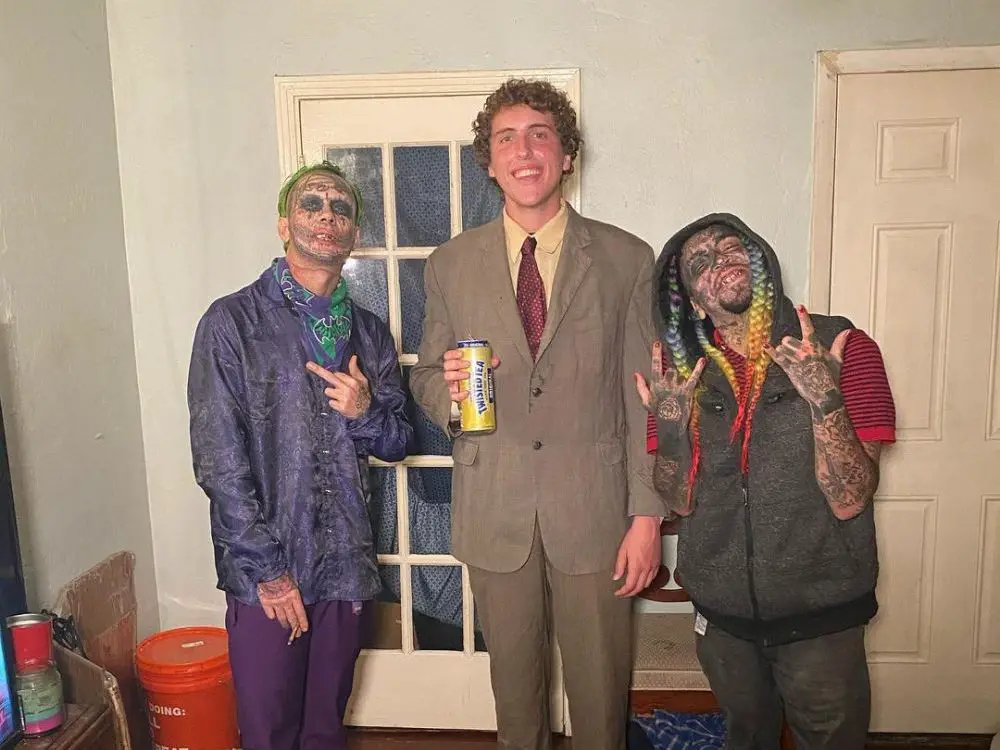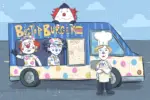The “White Lives Matter” event, held this April in Huntington Beach, California, was a gathering defined by predictable animosity. Each attendee is spewing the same hateful rhetoric and strolling along the sidewalks wearing similarly offensive shirts, all except for one man. His choice of attire is an oversized tan suit, and instead of a sign, he carries a microphone that he periodically offers to passersby.
He approaches a man carrying an “All Lives Matter” flag who eagerly offers a conspiracy theory about the death of Kobe Bryant before taking a hard right turn and alluding to his presence at the attack on the Capitol. Throughout the monologue, the man with the microphone casually nods along, asking follow-up questions when appropriate. After the interaction is done, he continues his stroll through the crowd, only to soon land upon another preposterous interview.
Attending a white nationalist event falls far outside of the ordinary for most Americans, but not for Andrew Callaghan. He has spent the past two years filming and uploading his unique form of guerilla journalism to YouTube with massive success. His original channel, All Gas No Brakes, currently has over 77 million views, garnering a loyal fanbase and numerous donors on Patreon. Callaghan specializes in discovering and documenting niche subcultures and events that go unnoticed by standard television news programs. The channel title is appropriate, for there is no subject that is off-limits and no sense of boundaries during his interactions with the people he stumbles upon.
The entirety of Callaghan’s videography is as eclectic and random as the statements uttered by the subjects he profiles. His catalog includes a piece on extraterrestrial truthers, a profile of a book club dedicated to Donald Trump Jr. and coverage of the animated crowd that attended a Space X launch. His uploads are varied and numerous, but listing the many atypical stories that he has covered doesn’t even begin to touch upon his craft.
Each video constructs a fly-on-the-wall viewing experience that is made palpable by the constantly shaky camera angles and lack of music. Most of his videos open with a hard cut to a high-octane interview segment or some kind of exaggerated spectacle, instantly immersing the viewer in the chaotic aura of the show. Mainstream networks curate their content to avoid awkwardness, yet Callaghan’s videos bask in it. The combination of uncomfortable pauses after absurd statements, perfectly timed crash zooms and Callaghan’s intensely focused demeanor often leaves the viewer questioning if the entire experience is an elaborate parody.
Journalism is a profession that typically breaks the fourth wall of filmmaking, as it is by nature an interactive format between a reporter and the audience. Callaghan goes a step beyond this practice, breaking a metaphorical fifth wall by becoming a direct accessory to the narratives offered by his interviewees. In his video on a group of associates that pursue Bigfoot, Callaghan is seen using the same pseudoscientific gear as his subjects, going as far as to mimic the techniques they have taught him for detecting the creature.
Callaghan invests himself so seriously into his lines of questioning that it allows the people he speaks with to share the uninhibited eccentricities of their worldviews. He effectively straddles the divide between the average viewer and the people he films, acting as the sole relatable figure for the audience while simultaneously playing along with his subjects to capture their honest opinions.
The atmosphere cultivated in All Gas No Brakes contains a heightened atmosphere of self-awareness and intentional separation from a standard news format. In an interview with Vice, Callaghan expressed his skepticism about traditional journalism, stating, “Most journalism curriculums in [journalism] school are written by people from the print media, local news era. They don’t prepare you for Instagram and TikTok maybe being the top way to send information out.”
The stuffy curricula that Callaghan references also fail to cover methods of extracting information in an informal manner. Apart from an occasional press badge and the microphone he holds, Callaghan’s public image and demeanor do not remotely resemble the standard trope of a television journalist. He goes on to explain that an important component of his approach to reporting is asking obvious questions with predictable answers to document the full extent of a conversation.
During his shoot of a July 4th beach party in Michigan, Callaghan asks a group of drunken and slightly belligerent beachgoers, “What are you most passionate about in life?” to which one woman hazily responds, “White Claw is life. It just speaks to the soul, you know?” A response mentioning alcohol at a gathering centered around its consumption is a superfluous but crucial part of Callaghan’s comedic packaging of the story. The audience is brought in on Callaghan’s humorous portrayal of the beachgoers, and the latter group’s total lack of self-awareness against this backdrop is the source of the production’s comedy.
A sizeable portion of Callaghan’s catalog falls into the category of situational humor, but many of his videos are examples of serious journalism. Callaghan entered the media ecosystem with a simple setup and purpose. He travels from location to location in an old-fashioned RV that he shares with a crew of the few friends his transient lifestyle permits. The wandering nature of his production is perfect for stumbling upon comical scenes but is equally helpful for accessing time-sensitive political occurrences.
A pivotal video for All Gas No Brakes was the documentation of the rioting in Minneapolis following the murder of George Floyd. Notably absent from the video is Callaghan’s tan suit, a costume he dons only for his comedic videos. In the video, Callaghan navigates the burning wreckage of a department store, sharing his microphone with willing participants as they share their disdain for the lack of police accountability. Callaghan’s focus on illustrating the extent of the protest is true to his mission of documenting the dimensions of stories that other platforms avoid.
The integrity of Callaghan’s production has not been enough to fortify him from the obstacles of restrictive overhead management. As an ambitious teenager, Callaghan entered a contract with a production company that wound up vastly restricting his ability to pursue multiple projects. In March, he parted ways with his production company over a contract disagreement about his division of time between the channel and a movie he was in the process of filming.
The split forced him to retool his creative process, resulting in an independent venture called Channel 5 with Andrew Callaghan. The new YouTube channel is thoroughly reminiscent of his first enterprise, complete with the iconic suit and instantly recognizable interview format. Callaghan has been fortunate enough to have ample support from viewer donations and a devoted following, but his predicament is nonetheless indicative of the difficulties faced by independent journalists in new media spaces.
Callaghan had the notoriety needed to revive his career, but his success does not erase the reality that many young content creators are strong-armed into similarly predatory deals. The success of Channel 5 is the exception and not the rule for most independent teams, and it is crucial that Callaghan’s audience grows to prove the viability of his pioneering approach to delivering news. The new YouTube channel allows Callaghan to continue on his anthropological journey, and the few videos that the page presently hosts demonstrate that his spirit has not been broken by the frictions of the business.
The most pressing concern Callaghan has about the future of his work is paradoxically related to his own success. In commenting on his audience, he admitted, “Sometimes I get worried that, when the show grows, it’ll be harder to keep it raw and real. But to be honest, the show’s already pretty big and we’re still doing this.” The continued functionality of the show’s oddball format is a testament to Callaghan’s ability to mold a cohesive experience out of unconventional and often nonsensical substance. It seems probable that no matter what future oddities or watershed moments occur in America, Callaghan will be there — suit and all — eager to tell another story.

















